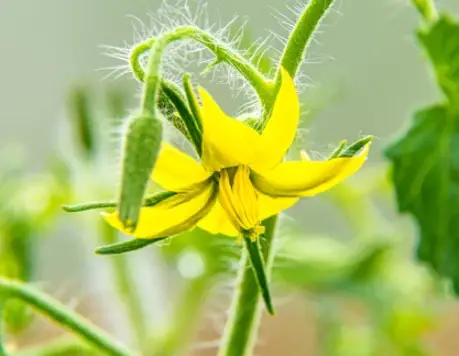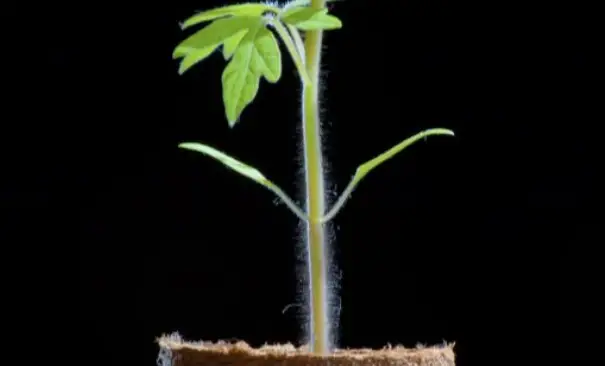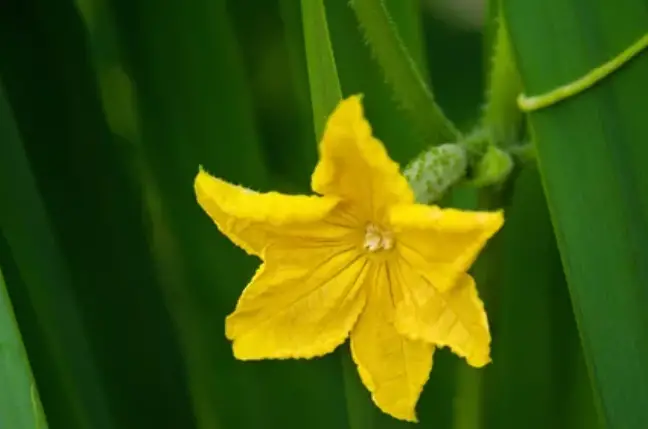Self-pollination is a process in which the transfer of pollen from the male reproductive organs to the female reproductive organs of the same plant occurs, resulting in the fertilization of the plant’s own flowers.
In vegetable gardening, self-pollination is a vital aspect as it helps to ensure the preservation of desirable traits, such as disease resistance, high yields, and flavor, in the offspring.
Growing self-pollinated vegetables has numerous benefits for gardeners, including increased control over the quality and quantity of their harvest, reduced dependence on external sources of pollination, and the ability to grow vegetables even in isolated or urban settings.
In this blog post, we will explore the world of self-pollination and its importance in vegetable gardening. We will also discuss the top self-pollinated vegetables to grow and provide tips on how to encourage self-pollination in your garden.
Whether you are a seasoned gardener or just starting out, this information will be valuable in helping you achieve a successful vegetable garden.

Self-Pollination
Self-pollination is a natural process that occurs in many plants, including vegetables. It happens when the male reproductive organs, known as stamens, release pollen, which lands on the female reproductive organs, called the pistils, of the same plant. This results in the fertilization of the plant’s own flowers, leading to the formation of seeds.
In comparison, cross-pollination occurs when pollen from one plant is transferred to the pistils of another plant. Cross-pollination can happen naturally, for example, by wind or insects, or it can be intentionally carried out by gardeners for specific purposes, such as improving yields or creating new varieties.
How self-pollination occurs in vegetables
Self-pollination occurs in vegetables when the male reproductive organs, known as stamens, release pollen that lands on the female reproductive organs, called the pistils, of the same plant.
This process is usually facilitated by the structure of the flowers, which is designed to promote self-pollination.
In some vegetables, such as tomatoes and peppers, the stamens and pistils are positioned closely together within the same flower, making self-pollination easy.
In other vegetables, such as beans and squash, the flowers are structured in a way that encourages self-pollination, with the stamens positioned above the pistils, allowing the pollen to fall directly onto the pistils.
It is also important to note that some vegetables, such as cucumbers and eggplants, are both self-pollinating and cross-pollinate, meaning they can self-pollinate or be pollinated by other plants. However, self-pollination is still the most reliable method of producing seeds in these vegetables.
Advantages of self-pollination over cross-pollination

self-pollinated vegetables
Self-pollination has several advantages over cross-pollination in vegetable gardening, including:
Preservation of desirable traits:
Self-pollination helps to ensure that the offspring produced retains the same desirable traits as the parent plant, such as disease resistance, high yields, and flavor.
Reliability
Self-pollination is a reliable method of producing seeds as it does not depend on external sources, such as wind or insects, to carry out the pollination process.
Control
Gardeners have greater control over the quality and quantity of their harvest with self-pollination, as they can choose the best plants to propagate.
Isolation
Self-pollination is particularly beneficial for gardeners who grow vegetables in isolated or urban settings, where there may be a limited number of other plants available for cross-pollination.
Ease of use
Self-pollination is a simple and straightforward process, requiring minimal intervention from the gardener.

Top Self-Pollinated Vegetables to Grow
Growing self-pollinated vegetables is a great option for gardeners looking for reliable and bountiful crops. Here are some of the top self-pollinated vegetables to grow in your garden:
Tomatoes:
Tomatoes are a popular and easy-to-grow self-pollinated vegetable, with a wide range of varieties available to suit different tastes and growing conditions.
Peppers:
Peppers, including sweet and hot varieties, are another popular self-pollinated vegetable that is easy to grow and produces a bountiful harvest.
Beans:
Beans, including green beans, Lima beans, and pole beans, are a staple in many vegetable gardens and are easy to grow as a self-pollinated crop.
Squash:
Squash, including summer and winter varieties, is a versatile and flavorful self-pollinated vegetable that is easy to grow and produces a large harvest.
Lettuce:
Lettuce is a quick-growing and self-pollinated vegetable that is perfect for gardeners who want to harvest fresh greens throughout the growing season.
Radishes:
Radishes are a fast-growing and self-pollinated vegetable that is ideal for gardeners who want to harvest their crops quickly.
Cucumbers:
Cucumbers are a self-pollinated vegetable that is easy to grow and produces a large harvest, making it a great option for gardeners looking for a bountiful crop.
How to Encourage Self-Pollination in Your Garden
Self-pollination is a natural process in many vegetables, but there are steps you can take to encourage and improve the process in your garden. Here are some tips to help encourage self-pollination:
Grow healthy plants:
Make sure that your plants are healthy and well-cared for, with adequate sunlight, water, and nutrients. This will help to improve their chances of successful self-pollination.
Space plants appropriately:
Make sure to space your plants appropriately to ensure that the flowers have enough room to develop and mature. This will also help to prevent overcrowding, which can lead to reduced yields.
Provide adequate ventilation:
Good airflow around your plants can help to improve self-pollination by carrying pollen from one flower to another. Ensure that your plants have enough space and ventilation to encourage this process.
Avoid excessive pruning:
While pruning can help to improve the overall health and yield of your plants, excessive pruning can also remove the flowers, reducing the chances of successful self-pollination.
Hand-pollinate if necessary:
If you are having difficulty with self-pollination, consider hand-pollinating your plants. This involves using a soft brush to transfer pollen from the stamens to the pistils of the same flower or another flower on the same plant.
How to Encourage Self-Pollination in Your Garden
Self-pollination is a natural process in many vegetables, but there are steps you can take to encourage and improve the process in your garden. Here are some tips to help encourage self-pollination:
Grow healthy plants:
Make sure that your plants are healthy and well-cared for, with adequate sunlight, water, and nutrients. This will help to improve their chances of successful self-pollination.
Space plants appropriately:
Make sure to space your plants appropriately to ensure that the flowers have enough room to develop and mature. This will also help to prevent overcrowding, which can lead to reduced yields.
Provide adequate ventilation:
Good airflow around your plants can help to improve self-pollination by carrying pollen from one flower to another. Ensure that your plants have enough space and ventilation to encourage this process.
Avoid excessive pruning:
While pruning can help to improve the overall health and yield of your plants, excessive pruning can also remove the flowers, reducing the chances of successful self-pollination.
Hand-pollinate if necessary:
If you are having difficulty with self-pollination, consider hand-pollinating your plants. This involves using a soft brush to transfer pollen from the stamens to the pistils of the same flower or another flower on the same plant.
Conclusion
Self-pollination is a process where a plant’s flowers produce fruit and seeds through pollination by its own pollen.
This method of pollination is common in many vegetables, including tomatoes, peppers, beans, squash, lettuce, radishes, and cucumbers.
Self-pollination offers several advantages over cross-pollination, including greater reliability and predictability of yields, and easier management of crops.
Self-pollination occurs and how to encourage it in your garden, you can enjoy a bountiful harvest of self-pollinated vegetables.
Whether you are a seasoned gardener or just starting out, self-pollination is a great option to consider for your vegetable garden.




